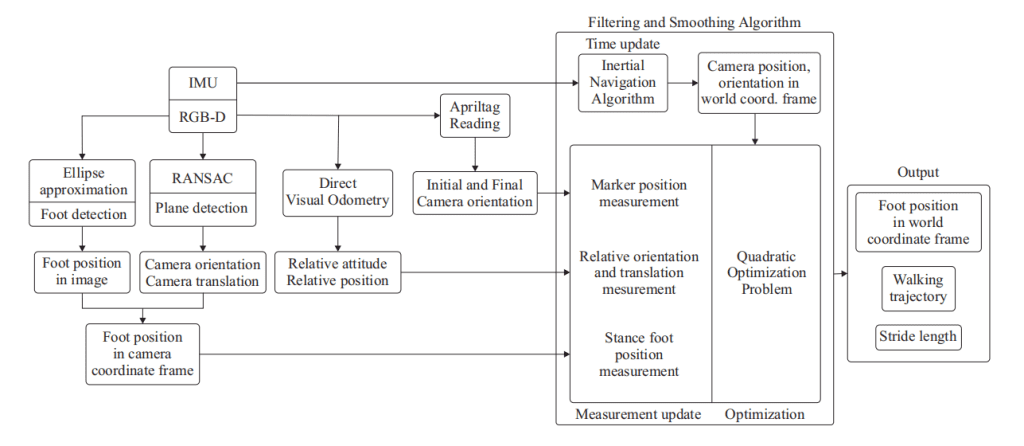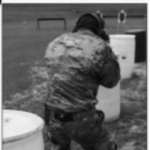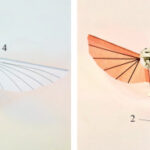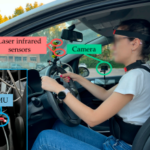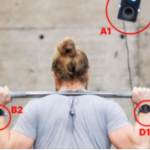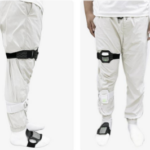Gait analysis, which is based on quantitative parameters such as stride length, step length, and walking speed to describe human walking ability, has received much scholarly attention with the emergence of new technologies and products.IMUs (inertial measurement units) provide a high sampling rate and low-cost solution, but state estimation using IMU measurements can quickly accumulate drift errors due to the presence of sensor bias. Therefore, combining a camera and an IMU can provide accurate and robust state estimation in most environments.
Dr. Duc Cong Dang and Prof. Young Soo Suh from Korea proposed a visual inertial ranging algorithm to estimate the stride length during walking and reconstruct the walking trajectory. To validate the algorithm, the experiments used a six-axis IMU and an RGB-D camera for foot detection and position estimation.
In this algorithm, data from the RGB-D camera mounted on the waist of the human body is fused with data from its internal IMU in the estimation algorithm to perform foot detection and position estimation. The positions of the ground and the foot in the standing phase are calculated and used as flags to construct the measurement equations for updating in the filter. To improve the filtering effect, the smoothing problem is experimentally transformed into a linear optimization problem.
The hardware system is shown in Figure 2, with image acquisition using an Intel Realsense D455 RGB-D camera, a six-axis IMU configured inside the camera, image and inertial data timestamp synchronization, and two infrared markers mounted on both feet to provide ground truth data from the optical tracking system.
In the experiment, five volunteers were asked to walk in a long corridor in a straight line, each walking on separate paths for distances of 5m, 10m and 15m, five times each. The results showed that the overall root-mean-square error of the walking stride estimated by this method was about 3.8 cm.
Compared to conventional pressure pad or optical tracking systems, the IMU-Camera system installed at the user's waist allows for a longer walking range. In future work, if the foot detection algorithm can be further improved so that it can detect each gait phase of the foot and combine it with a human model to reconstruct the shape and posture, more accurate and stable gait analysis can be achieved, contributing to the development of high technology such as VR.
Original paper: https://ieeexplore.ieee.org/document/9986035/


